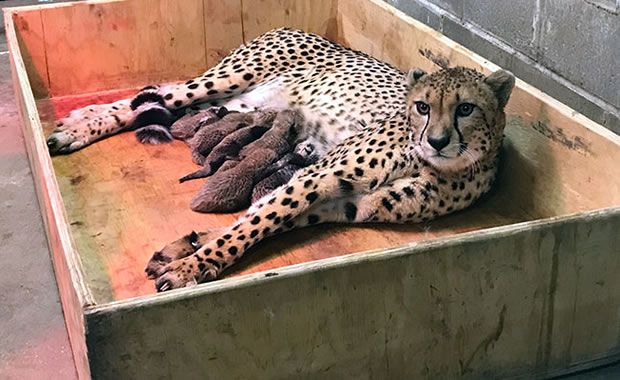| Achatinella abbreviata |
| Achatinella apexfulva |
| Achatinella bellula |
| Achatinella buddii |
| Achatinella bulimoides |
| Achatinella byronii |
| Achatinella caesia |
| Achatinella casta |
| Achatinella cestus |
| Achatinella concavospira |
| Achatinella curta |
| Achatinella decipiens |
| Achatinella decora |
| Achatinella dimorpha |
| Achatinella elegans |
| Achatinella fulgens |
| Achatinella fuscobasis |
| Achatinella juddii |
| Achatinella juncea |
| Achatinella lehuiensis |
| Achatinella leucorraphe |
| Achatinella lila |
| Achatinella livida |
| Achatinella lorata |
| Achatinella mustelina |
| Achatinella papyracea |
| Achatinella phaeozona |
| Achatinella pulcherrima |
| Achatinella pupukanioe |
| Achatinella rosea |
| Achatinella sowerbyana |
| Achatinella spaldingi |
| Achatinella stewartii |
| Achatinella swiftii |
| Achatinella taeniolata |
| Achatinella thaanumi |
| Achatinella turgida |
| Achatinella valida |
| Achatinella viridans |
| Achatinella vittata |
| Achatinella vulpina |
Creature Profile
Oahu tree snails are found in the mountains of Oahu Island in Hawaii and face extinction in the near future. There were once over 40 recorded species of the snail, but now all but eight (possibly seven) species are now extinct. Several of the species only exist in captivity at the University of Hawaii. Snails are mollusks that have coiled or spiral shells covering their soft bodies, and the shells get bigger toward the opening as they grow. The shells of adult Oahu tree snails are smooth, glossy and conical in shape and are 17 to 24 mm in length with five to seven whorls. Colorations and patterns vary according to species. Tree snails move very slowly by alternating body contractions with stretching. Their bodies produce mucus that reduces friction on the surfaces allowing movement. When snails retract into their shells, they secrete mucus that dries to secure the entrance of the shell and to prevent it from drying out in dry months.
Oahu tree snails are only found in the mountain ridges of Oahu Island where there are plenty of native shrubs and trees. They are nocturnal, spending most of the day in the trees and can live their entire lives dwelling on one tree where they eat fungus that grows on the leaves. All snails are "hermaphrodites," possessing both male and female reproductive organs, but they still need to find another snail to mate with. When the mating pair meets, one snail pierces the skin of the other snail with a calcified "love dart." The exact purpose of this is not fully understood but it seems to stimulate the other snail into exchanging small packets of sperm. After mating is complete the snails will produce eggs internally, which are fertilized by the sperm that has been exchanged.
Both adult male and female give birth, and they give birth to live young.
Causes of decline include human settlement, overcollecting of shells, and habitat destruction. The species is also preyed upon by the introduced carnivorous snail, Euglandina rosea, which was originally introduced in the area to help control the population of another species of snail. A recovery plan has been drawn up in an attempt to save the species, and it involves the protection of its habitat and a captive breeding program that aims to introduce the snails back into the wild.
Status/Date(s) Listed as Endangered
| Scientific Name | Status | Listing Date | Range | |
| 1. | Achatinella abbreviata | EN-US FWS | February 12, 1981 | Hawaii |
| 2. | Achatinella apexfulva | EN-US FWS | February 12, 1981 | Hawaii |
| CR-IUCN | 1996 | |||
| 3. | Achatinella bellula | EN-US FWS | February 12, 1981 | Hawaii |
| CR-IUCN | 1996 | |||
| 4. | Achatinella buddii | EN-US FWS | February 12, 1981 | Hawaii |
| 5. | Achatinella bulimoides | EN-US FWS | February 12, 1981 | Hawaii |
| CR-IUCN | 1996 | |||
| 6. | Achatinella byronii | EN-US FWS | February 12, 1981 | Hawaii |
| CR-IUCN | 1996 | |||
| 7. | Achatinella caesia | EN-US FWS | February 12, 1981 | Hawaii |
| 8. | Achatinella casta | EN-US FWS | February 12, 1981 | Hawaii |
| 9. | Achatinella cestus | EN-US FWS | February 12, 1981 | Hawaii |
| CR-IUCN | 1996 | |||
| 10. | Achatinella concavospira | CR-IUCN | 1996 | Hawaii |
| EN-US FWS | February 12, 1981 | |||
| 11. | Achatinella curta | CR-IUCN | 1996 | Hawaii |
| EN-US FWS | February 12, 1981 | |||
| 12. | Achatinella decipiens | EN-US FWS | February 12, 1981 | Hawaii |
| CR-IUCN | 1996 | |||
| 13. | Achatinella decora | EN-US FWS | February 12, 1981 | Hawaii |
| 14. | Achatinella dimorpha | EN-US FWS | February 12, 1981 | Hawaii |
| 15. | Achatinella elegans | EN-US FWS | February 12, 1981 | Hawaii |
| 16. | Achatinella fulgens | CR-IUCN | 1996 | Hawaii |
| EN-US FWS | February 12, 1981 | |||
| 17. | Achatinella fuscobasis | EN-US FWS | February 12, 1981 | Hawaii |
| CR-IUCN | 1996 | |||
| 18. | Achatinella juddii | EN-US FWS | February 12, 1981 | Hawaii |
| 19. | Achatinella juncea | EN-US FWS | February 12, 1981 | Hawaii |
| 20. | Achatinella lehuiensis | EN-US FWS | February 12, 1981 | Hawaii |
| 21. | Achatinella leucorraphe | CR-IUCN | 1996 | Hawaii |
| EN-US FWS | February 12, 1981 | |||
| 22. | Achatinella lila | CR-IUCN | 1996 | Hawaii |
| EN-US FWS | February 12, 1981 | |||
| 23. | Achatinella livida | EN-US FWS | February 12, 1981 | Hawaii |
| 24. | Achatinella lorata | CR-IUCN | 1996 | Hawaii |
| EN-US FWS | February 12, 1981 | |||
| 25. | Achatinella mustelina | EN-US FWS | February 12, 1981 | Hawaii |
| CR-IUCN | 1996 | |||
| 26. | Achatinella papyracea | EN-US FWS | February 12, 1981 | Hawaii |
| 27. | Achatinella phaeozona | EN-US FWS | February 12, 1981 | Hawaii |
| CR-IUCN | 1996 | |||
| 28. | Achatinella pulcherrima | EN-US FWS | February 12, 1981 | Hawaii |
| CR-IUCN | 1996 | |||
| 29. | Achatinella pupukanioe | EN-US FWS | February 12, 1981 | Hawaii |
| CR-IUCN | 1996 | |||
| 30. | Achatinella rosea | EN-US FWS | February 12, 1981 | Hawaii |
| 31. | Achatinella sowerbyana | EN-US FWS | February 12, 1981 | Hawaii |
| CR-IUCN | 1996 | |||
| 32. | Achatinella spaldingi | EN-US FWS | February 12, 1981 | Hawaii |
| 33. | Achatinella stewartii | CR-IUCN | 1996 | Hawaii |
| EN-US FWS | February 12, 1981 | |||
| 34. | Achatinella swiftii | CR-IUCN | 1996 | Hawaii |
| EN-US FWS | February 12, 1981 | |||
| 35. | Achatinella taeniolata | EN-US FWS | February 12, 1981 | Hawaii |
| CR-IUCN | 1996 | |||
| 36. | Achatinella thaanumi | EN-US FWS | February 12, 1981 | Hawaii |
| 37. | Achatinella turgida | EN-US FWS | February 12, 1981 | Hawaii |
| CR-IUCN | 1996 | |||
| 38. | Achatinella valida | EN-US FWS | February 12, 1981 | Hawaii |
| 39. | Achatinella viridans | CR-IUCN | 1996 | Hawaii |
| EN-US FWS | February 12, 1981 | |||
| 40. | Achatinella vittata | EN-US FWS | February 12, 1981 | Hawaii |
| 41. | Achatinella vulpina | CR-IUCN | 1996 | Hawaii |
| EN-US FWS | February 12, 1981 |
January 1, 2006
Glenn, C. R. 2006. "Earth's Endangered Creatures - O'ahu Tree Snail Facts" (Online). Accessed 11/10/2024 at http://earthsendangered.com/profile.asp?sp=1023&ID=7.
Need more O'ahu Tree Snail facts?





